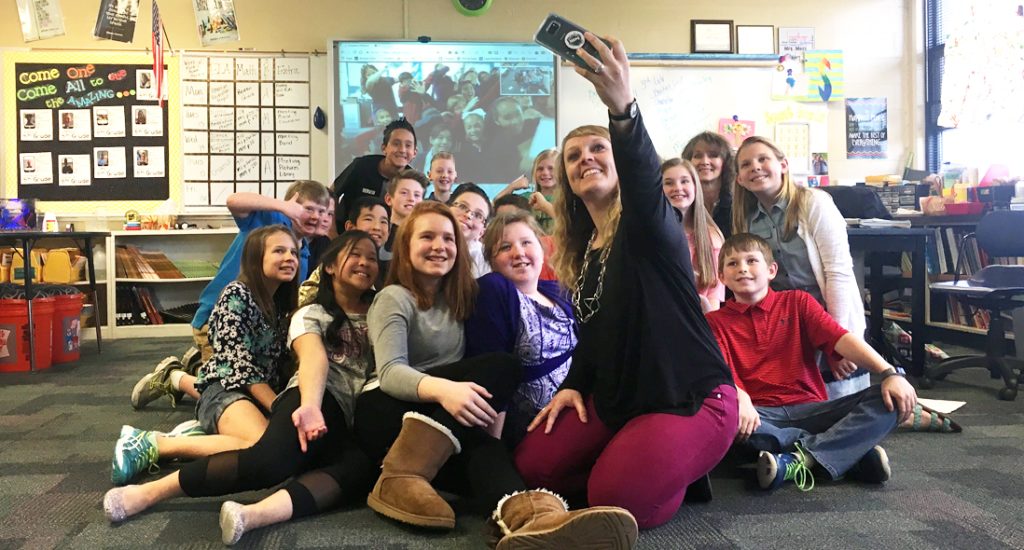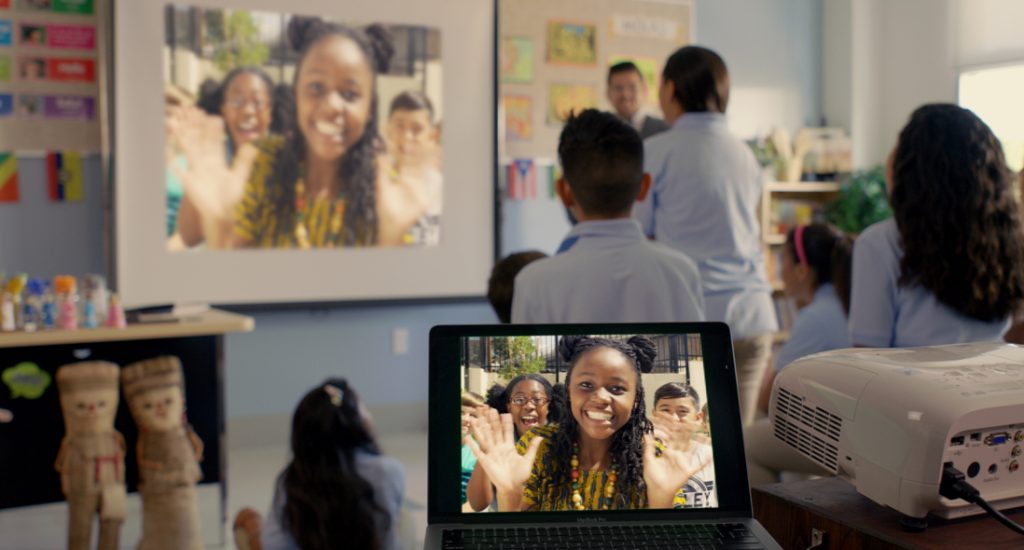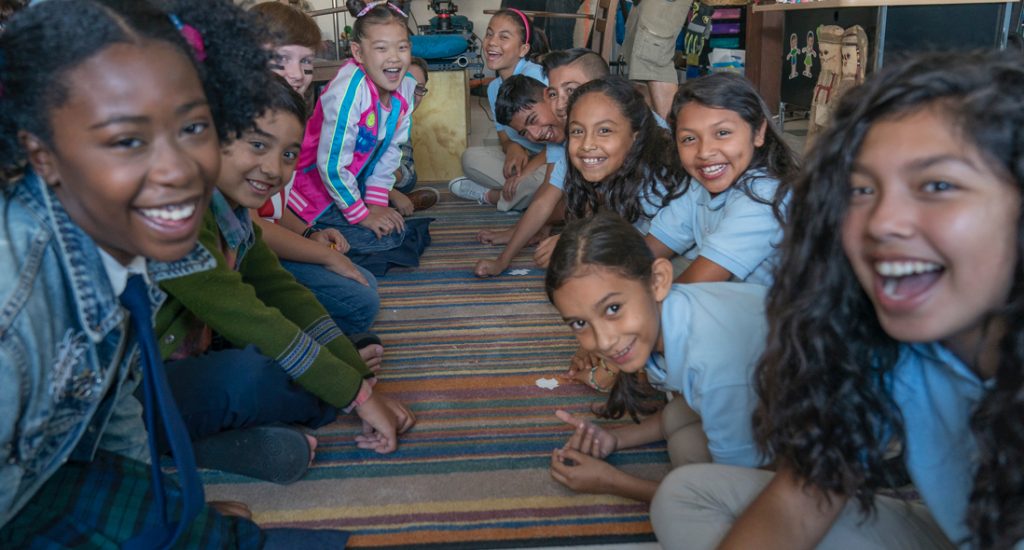Using technology in the classroom to make global connections can benefit students in a variety of ways from improving learning through fun and engaging experiences to increasing student confidence in the use of technology tools. Although integrating technology in the classrooms can often be a great way to engage students and build their communication skills, many educators also face difficulties in implementing these tools effectively. From firewalls to device incompatibility to audio/visual difficulties, any number of challenges can arise.
But with a little advanced planning, you can help ensure a positive experience for you and your students. Preparing to use technology for global connections in the right way can help ensure the experience is student-led, that students feel comfortable and ready to connect via video, and that all students are developing the knowledge and technology skills they will need to thrive in the 21st century. Below are a few tips for ensuring your first virtual exchange is a success.
For ideas on additional tools, devices, and apps to use in the classroom, check out the ISTE blog and Class Tech Tips.
Connect with your partner teacher in advance
Whether you’ve found a partner teacher through your PLN, on Twitter, or Empatico’s free matching tool, you’ll want to connect with your new colleague in advance to plan your exchange. Share emails, phone numbers, or, if you’re using Empatico, you can use our instant messaging tool to chat directly within the platform (and even test out the video chat feature as you get to know your partner!).

You may want to discuss the size of your class, student demographics, your goals for the exchange, your schedule, how you plan to set up your classroom and technology, and any other details relevant to ensuring you and your partner are aligned. You may even want to share photos and videos of your classrooms in advance. Empatico facilitates all of this by matching teachers with overlapping availability (we even convert time zones for you!), student ages, and activity interests, and by providing the chat and file sharing features you’ll need for planning.
Determine seating arrangements in advance
One of the first things you will want to consider prior to connecting classrooms through video technology is the best way to set up your class. This may be determined by a variety of factors including your class size, student behavior, and technology setup (camera range, microphone sensitivity, etc.). In our experience with Empatico exchanges, many teachers seat students on the floor, with some students seated on chairs if they can’t all sit comfortably on the floor (Setup A). For larger classes, you might try seating some students on the floor, some in chairs, and some standing (Setup B).

One way to check your arrangement is to tell students as you start a live video interaction, “If you cannot see yourself on screen, your partner class cannot see you!”
Plan speaking arrangements and transitions
Just as important as class setup, it’s important to consider student speaking arrangements in advance of connecting classrooms to ensure you and your partner class can clearly communicate, that you engage all students, and that transitions between topics are seamless.
Some options for speaking arrangements include:
- Choose student speakers before the interaction: Decide in advance which students will speak and in what order. If you will be planning questions in advance, you may even want to prepare a short script on a small slip of paper for students to read their responses.
- Call on volunteers during the interaction: The teacher (or a student you selected) calls on an individual or pairs of students to walk up to the device to speak in response to specific questions or prompts.
A few other points to discuss in advance with your students:
- Be sure that student speakers have a clear path to walk to the device when it’s their turn to speak. Remind students not at the camera to minimize talking and other distractions in the background.
- When it’s a student’s turn to speak, they should stand/sit close to the device, look directly into the camera, say their comment/question loudly and clearly, and remain at the camera to hear their partner classmate’s response. Students might start by saying their name (e.g., “Hi, my name is ___. My question is…).
- Allowing one student from each classroom to converse on screen at the same time will help strengthen personal connections among partner classmates.

Test your technology
Log in to the platform you are using in advance to test your camera, microphone, speakers, and internet connection. If you plan to use a mobile device or tablet, you may want to test both your front camera (facing you) and back camera (facing away from you). With Empatico, we have a “tech test” built into our web-based platform that allows you to test all of this in one place!
If your school or district has an instructional technology specialist or coach, we recommend working closely with them to test your technology, troubleshoot any issues, and help you acquire any necessary devices in advance. We’ve heard from teachers that technology coaches can offer much-needed support if any issues arise during the exchange, too!
Anyone who has ever tried to connect via video near a window or bright overhead light knows lighting can affect the clarity of your picture. Consider checking the brightness of your screen before a live connection and adjust the lighting in your classroom or the position of your camera so that it is bright enough that your partner class can see your students’ faces, but also dark enough that your students can view the screen well. If using a mobile device or tablet, be sure to set your device to speaker mode so that your students can hear.
A great way to test everything out from technology to student speaking roles to walking to and from the camera is to lead a quick role-play exercise before your connection for students to practice. This can help reduce uncertainty and nervousness, which can then lead to a more positive and meaningful connection between classrooms.
Ready to try an Empatico exchange in your classroom this school year? Sign up for a free Empatico account today!
“My students loved it. English is not their first language and they were so proud of themselves for speaking to students from the United States. The platform was easy to use and my teacher partner was enthusiastic and easy to work with. The activities are engaging and easy to complete with the students.”
-Anna Carstens, 4th grade teacher, Colegio Madison Monterrey, Monterrey, Mexico
“It’s important for my students to understand how cool it is to connect with someone on the other side of the country — my students aren’t great at geography — so I wanted them to realize how far away these students are. I wanted them to see how easy it is to learn about and connect to people in other parts of the world.”
– Anonymous, 4th-5th grade teacher, charter school, Washington, D.C., reflecting after an Empatico interaction with her partner class in San Diego, California



